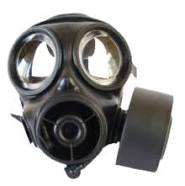Tyre Width vs Tyre Pressure
j_vora
Posts: 63
in Road general
Hello :
Why do thin width tyre require higher pressures than wide width tyres ?
Thanks in advance.
Jai
Why do thin width tyre require higher pressures than wide width tyres ?
Thanks in advance.
Jai
0
Comments
-
Less internal volume to absorb deflections. Running narrow tyres at low pressures induces the risk of pinch flats. This is where the tyre and tube are pinched between the road surface and the rim.0
-
Thank you manglier for the reply -
Logical - Makes sense.0 -
Taken from the Schwalbe technical manual (questions edited)
"For Tyres at the same pressure why do wide tires roll better than narrow ones?
The answer to this question lies in tire deflection. Each tire is flattened a little under load. This creates a flat contact area.
At the same tire pressure, a wide and a narrow tire have the same contact area. A wide tire is flattened over its width whereas a narrow tire has a slimmer but longer
contact area.
The flattened area can be considered as a counterweight to tire rotation. Because of the longer flattened area of the narrow tire, the wheel loses more of its “roundness”
and produces more deformation during rotation. However, in the wide tire, the radial length of the flattened area is shorter, making the tire “rounder” and
so it rolls better.
Why ride narrow tires if wide tires roll better?
Wide tires only roll better at the same inflation pressure, but narrow tires can be inflated to higher pressures than wide tires. However, they then obviously give a less
comfortable ride.
In addition to this, narrow tires have an advantage over wide ones at higher speeds, as they provide less air resistance.
Above all, a bicycle with narrow tires is much easier to accelerate because the rotating mass of the wheels is lower and the bicycle is much more agile. At constant speeds of around 20 km/h, the ride is better with wider tires. In practice, the energy saving is even greater than in theory as the elasticity of the tires absorbs road shocks, which would otherwise be transferred to the rider and so saves energy."
A lot of the recently reported research into rolling resistance had all the tyres at the same pressure so of course wider tyres came out top.0


